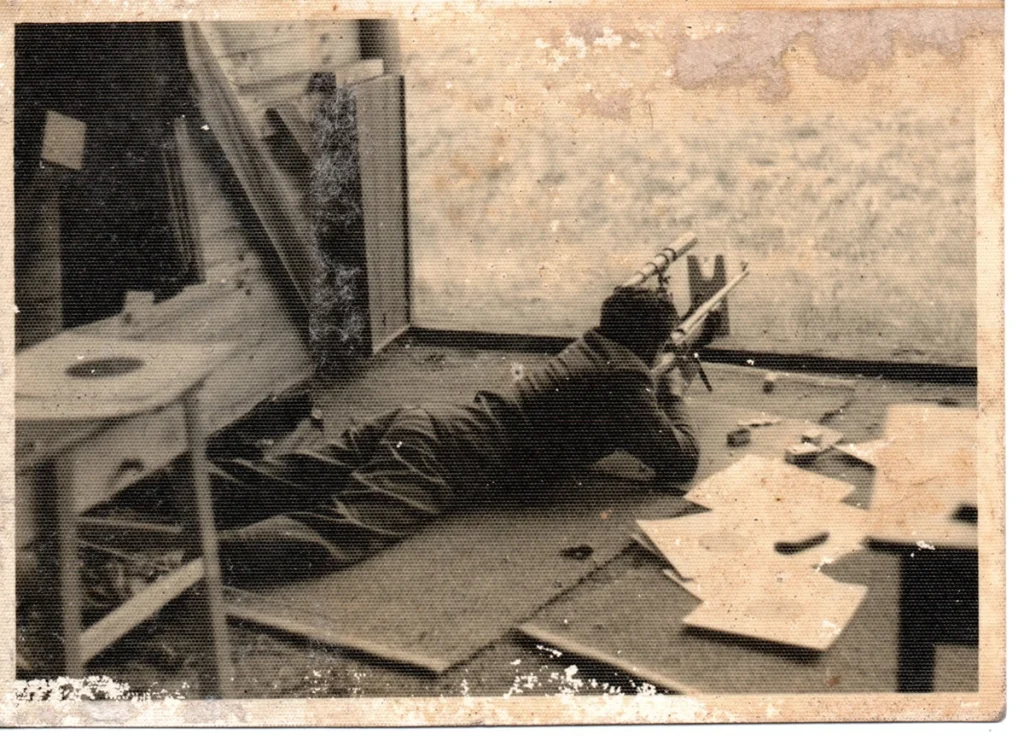Devashish Gaur, an artist based in Delhi, embarked on a captivating artistic journey when he stumbled upon an old box of family photographs during home renovations in 2019. Intrigued by the images, many of which featured his grandfather, Gaur decided to utilise them in an ongoing series of complex photo-based artworks that blur the boundaries between the past and the present. This unique fusion of personal and cultural history serves as a reflection of the technological and political transformations that have occurred across generations.
In this series, Gaur employs various techniques, sometimes even physically splicing together images from different time periods. The amalgamation of past and present imagery creates a visual narrative that explores the intricate connections between personal identity and societal shifts. One striking composition from the series depicts an old group photograph viewed through the lens of a smartphone camera. The faces of the men in the photo are encircled by little yellow boxes, reminiscent of facial recognition attempts made by the device. This juxtaposition symbolizes Gaur’s quest to trace his own origins while alluding to the pervasive surveillance prevalent in his hometown of Delhi, which has earned the dubious distinction of being the world’s “most surveilled city” due to its high density of CCTV cameras.

Alongside these manipulated images, Gaur incorporates his own black-and-white photographs characterized by a sense of solitude, disconnection, and unfulfilled aspirations. These introspective compositions often feature solitary figures or still lifes. In one poignant image, Gaur captures his father’s stained pillow leaning against a wall, evoking a profound sense of desolation. Another photograph showcases a copper plaque awarded to Gaur’s grandfather for his involvement as a freedom fighter during India’s struggle for independence. However, the plaque is displayed in reverse, symbolizing the artist’s skepticism regarding the true extent of societal freedom achieved in his country.
The series serves as a reminder of the profound impact that sociopolitical changes can have within the confines of a family. Gaur notes that his own family has become increasingly fragmented over time, with infrequent gatherings being the norm. Meanwhile, his father has become more outspoken, often expressing his opinions on current events through social media platforms. Unfortunately, his views have sometimes led to account suspensions due to their controversial nature. For instance, he opposed the construction of a temple near their residence, perceiving it as a manifestation of the Indian government’s growing tendency to exploit religion as a divisive force. This ideological clash with neighbors resulted in conflict. Another poignant image within the series captures an idol that Gaur’s father once worshipped, now neglected and covered in layers of dust.

In addition to his ongoing series, Gaur has recently dedicated several months to a project titled “Grey Space” while residing in Auroville, an experimental Indian city founded in 1968 with the goal of fostering progressive harmony among people from diverse backgrounds. “Grey Space” involves the curation of an alternative family album comprised of archival photos discovered in shops across India. Gaur carefully selects photographs that capture subtle details such as attire and gestures, which he interprets as markers of social class or performances of gender. Through this endeavor, Gaur aims to create a vernacular collective history of India that prioritizes self-representation over colonial depictions crafted from the perspectives of Western observers. In his artistic practice, Gaur views photographs as portals and prisms that offer insights into individual lives while providing outward observations of the wider society.
Through his thought-provoking artworks, Devashish Gaur invites viewers to contemplate the interplay between personal narratives, cultural shifts, and the broader socio-political context. His explorations highlight the complex nuances of identity, memory, and societal dynamics, inviting us to reflect on our own place within the ever-evolving tapestry of history.
Feature image: Untitled, 2019–ongoing, from the series “Grey Space.” Courtesy: Devashis Gaur

Contributor





